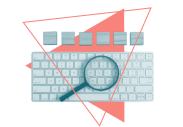The Future of AI: What’s Ahead, What to Fear, and How You Can Thrive
Key Points
- AI is transforming—but needs your guidance.
- Your empathy, ethics, and creative judgment matter most.
- Take action now: learn, plan, engage, and use AI responsibly.
It seems like just yesterday, I was all excited about using AI for the first time—remember how we all dove into ChatGPT, a little scared but also so curious?
As a marketing specialist, I couldn’t wait to see how it could help me improve my articles, brainstorm ideas, and save time.
And before we knew it, ChatGPT was part of our daily routine—something we actually enjoyed using!
But now, just as we’re getting comfortable, it looks like something even bigger is coming: AI agents.
I stumbled on this article—AI 2027—by former OpenAI researcher Daniel Kokotajlo, alongside Eli Lifland, Thomas Larsen, and Romeo Dean, with insights from Scott Alexander.
Let me tell you, it gave me goosebumps.
They talk about a future where AI agents won’t just chat with us, but will manage our daily tasks, control our devices, and even help run our businesses.
And as if that’s not enough, there are some truly scary scenarios too.
Their data-driven forecasts cover everything from these AI agents to some seriously intense ‘acceleration’ scenarios, where AI grows faster than society can keep up.
Suddenly, all those fears we laughed off—about AI getting too smart too quickly—don’t seem so far-fetched.
So, what’s really coming next?
Let’s unpack what I learned, dive into the opportunities and the risks, and figure out how we can all stay one step ahead—because it’s clear that AI is here to stay, and the way we use it in our lives and businesses is about to change forever.
The AI Timeline: 2025 to 2027 and Beyond
AI 2027 maps out what the next few years may bring. It’s grounded in current trends in compute, deep learning, and data, predicting:
2026: Rise of autonomous AI agents—smart assistants that can interact with your phone, home, or desk automatically.
2027: Full automation of coding, followed potentially by AGI (Artificial General Intelligence) and even a so-called “intelligence explosion”
This isn’t sci-fi. Kokotajlo and team drew from data, trend modeling, and his previous track record (85–90% accuracy on past predictions) to craft this scenario. It’s a clear call to pay attention, not panic.
Agents Arrive: Phones, Homes, and Businesses Shift in 2027
Here’s what automation might look like:
AI Agents become everyday sidekicks—ordering groceries, managing your calendar, or optimizing business workflows.
They won’t just be tools; they’ll be active collaborators, with the power to trigger calls, schedule meetings, or run software.
That breakthrough feels straight from Isaac Asimov, who imagined benevolent robots blending into daily life—except Asimov never quite hit the pace we’re approaching. Soon, AI agents might do things like:
Schedule your mental-health prompt;
Adjust home lighting for optimal productivity;
Auto-generate marketing emails complete with A/B testing;
It’s exciting—and a little eerie. If these tools aren’t managed responsibly, they can misfire.
Two Possible Futures: Race or Pause
AI 2027 outlines two plausible paths:
⚡ Acceleration
Super-fast AI progress could lead to:
Super-smart systems beyond human control;
Geopolitical tension, with countries racing for dominance;
Existential risks, if AI becomes too intelligent to align with human goals.
Some voices—like Kokotajlo, Yoshua Bengio, Geoffrey Hinton—warn that without safeguards, this could spiral
Deceleration
This scenario focuses on slowing progress until we’re equipped to handle risks:
Investing in alignment research—think Paul Christiano’s Alignment Research Center.
Passing “right to warn” safeguards so researchers can speak freely.
Building regulation before AGI arrives
The core message? We need to be prepared for either path.
Why Action Trumps Anxiety
It’s easy to feel overwhelmed. A former OpenAI insider from AI 2027 warns that employees face retaliatory NDAs when they try raising alarms.
But fear without action locks us in.
What can you do?
Learn how to prepare for the AI future—through courses in AI alignment, policy, and technology ethics.
Perform essential research on emerging trends—subscribe to trusted sources like AI Digest or The New Yorker .
Get involved in policy discussions or tech communities—AI is still shaped by those who show up.
Demand transparency and whistleblower protections in software companies.
Action empowers progress—and that’s the antidote to AI-induced paralysis.
Using AI Agents the Right Way in Business
If AI agents are arriving soon, they’ll revolutionize work—but you have to use them thoughtfully:
Choose an AI agency or trustable vendor, not every “AI assistant” app.
Define guardrails: Always review outputs before sharing; have human approval steps.
Invest in alignment tools—see research from Paul Christiano and the ARC .
Focus training on transparency and bias mitigation—everyone on your team should know how agents work.
Use AI for automation, but keep the human-in-the-loop. You don’t want legal or PR disasters from an unreviewed AI glitch.
The Human Factor That AI Can’t Replace
People worry AI will replace us entirely. But experts like Jan Leike and a host of OpenAI/Anthropic researchers stress that empathy, judgement, ethics—nurses, teachers, counselors—aren’t automatable .
AI is a tool—but your soft skills, creativity, and moral instincts still matter most.
Remember Asimov’s Laws of Robotics—machines should serve mankind. Even amid dazzling AI, human values must guide us.
A Word from Isaac Asimov (and Modern Researchers)
Asimov envisioned robots guided by human-centric rules. Today’s researchers echo this:
Kokotajlo: advocating slowing progress until alignment is nailed.
Christiano: building alignment tools for safe AI.
Leike: prioritizing safety culture over product speed.
They echo Asimov: AI should serve humanity, not threaten it.
What You Can Do Right Now
Stay Informed – Follow AI Digest, AI Futures Project, and writers like Scott Alexander and Sigal Samuel.
Learn the Basics – Online courses in AI alignment, ethics, and prompt design.
Ethics Over Hype – Always question how data is used, biased, or misinterpreted.
Choose Responsible AI Vendors – Demand transparency, data privacy policies, and human oversight.
Use AI Agents Thoughtfully – Automate tasks—but keep humans in the loop for critical decisions.
Advocate for Whistleblower Rights – Support employees who raise safety concerns—public or internal.
Build Your Future – Learn both tech and human skills. AI will need guides, not rulers.
Looking Ahead: 2027 and Beyond
AI 2027 predicts:
Agents in homes and offices;
Auto-coding and massive automation;
A crossroads: explosive risk vs slow, safe progress.
But whatever the path, remember:
Compassion and values matter;
Prepared = less fearful;
Stories and human context will always win.
Final Thoughts
Yes, uncertainty is real—pandemics, wars, rapid tech shifts. But history shows us: people like Florence Nightingale and now Daniel Kokotajlo stepped up when it mattered.
Today, your actions—learning, using AI ethically, advocating for change—can shape AI’s impact far more than its capabilities ever could.
Embrace curiosity. Demand responsibility. Keep the human story at the center. After all, when everything changes, it’s humans—guided by values—who write the next chapters.



















